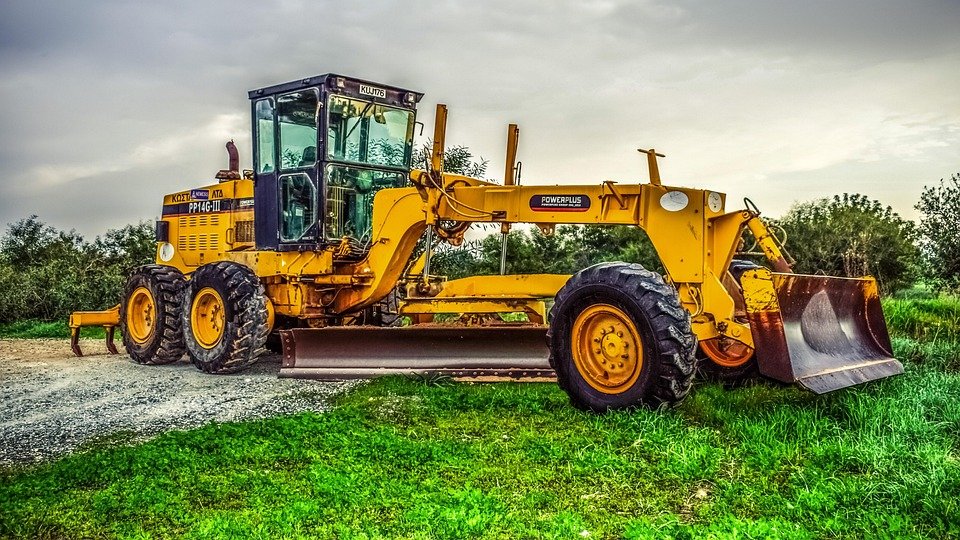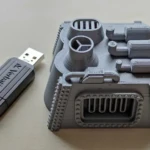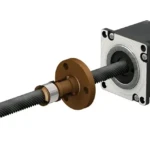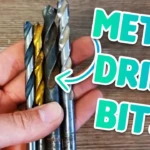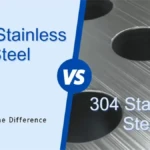Unlocking accuracy: Master the G&M code for successful CNC milling
In the high-risk world of CNC milling, micron-scale precision converts raw metal into complex parts, and G and M codes are nameless heroes. These alphanumeric commands form the basis of each CNC program, determining each step of the spindle, the trajectory of the tool, and the entire machining sequence. At Greatlight, we use the latest five-axis CNC machining center to solve complex manufacturing challenges, and a deep understanding of these codes is essential to pushing the boundaries of possible outcomes. Whether you are an engineer optimizing prototypes or a mechanic who perfects production operations, the fluency of G and M codes is not negotiable.
Why G&M code is the heartbeat of CNC milling
Imagine your mission is to produce critical aerospace bays with complex curved surfaces. This shape, each nuance of each hole, slot and profile is not defined by hand, but by elaborate G and M commands. These instructions translate complex design data (from CAD models) into precise physical motion of cutting tools in-machine. They control:
- Toolpath geometry: Where the tool moves (line, arc, spiral path).
- Tool behavior: Cutter diameter compensation, length offset.
- Machine functions: Spindle status, coolant flow rate, tool change.
- Program flow: Loop, subroutine call, stop.
Without this precise language, even the most advanced five-axis machines, like those used on Greatlight, will be inert metal. Let’s decode the essentials.
Basic G-code: Define geometry and motion basis
G code mainly deals with Positioning, paths and geometric functions tool. Think of them as "What" and "Where" Milling operation.
-
G00: Quick positioning: CNC sprinters move. Instructs the machine to move to the specified position at its maximum feed rate (non-cut motion). Save valuable cycle time, but not available when interacting with the material.
- example:
G00 X50.0 Y25.0 Z5.0Move the tool quickly above (50, 25, 5). - Five-axis insights: It is crucial to effectively position the tool head in complex directions before participating.
- example:
-
G01: Linear interpolation: Main force. Command the tool to move in a completely straight line at a specified and controlled feed rate for actual cutting.
- example:
G01 Z-10.0 F150.0The feed rate is directly reduced to Z = -10mm at a feed rate of 150 mm/min. - hint: Control surface finish quality – Adjust feed rate (F) according to material and finish requirements.
- example:
-
G02 and G03: Circular interpolation: Curve Master. These commands guide the tool clockwise (
G02) or counterclockwise (G03) arc.- Syntax structure:
G02/G03 X.. Y.. I.. J.. F..(Specify the end point [X,Y] and arc center offset [I, J] from the starting point of the XY plane). Other aircraft needG17(xy),G18(xz), orG19(Yz). - Five-axis strength: Essential for complex contours and mixed surfaces that can only be achieved through multi-axis motion.
- Syntax structure:
-
G17/G18/G19: Aircraft Selection: Stage Setter. Define which plane (xy, xz, yz) circular interpolation (
G02/G03) or cutter compensation will occur.G17(XY plane) is the most common default value for 3-axis operation. -
G40/G41/G42: Cutter Radius Compensation (CRC): Intelligent offset. Compensate the actual diameter of the tool, generate the path according to the tool center path (TCP –
G40) or part profile (leave material on the left –G41or correct –G42).- Crucial: Use different tool sizes to maintain dimensional accuracy without reprogramming the part size.
- implement: Need to specify a compensation tool number (for example,
D01) After the G41/G42 command.
-
G43/G44/G49: Tool Length Compensation (TLO): Master the z-axis accuracy. Apply offsets to illustrate the exact length of each tool (
G43Positive,G44Negative).G49Cancel TLO.- Essential: Change tools efficiently while maintaining correct Z-Depth references without touching each tool.
G43 H__(For example,G43 H01) It is very common on tool change lines (T01 M06).
- Essential: Change tools efficiently while maintaining correct Z-Depth references without touching each tool.
-
G54 -G59: Working Coordinate System (WCS): Part picker. definition "Zero" or the absolute zero of a particular part relative to the machine. Multiple offsets allow for continuous running of different parts/programs.
- Basic: use
G54(orG55,,,,,G56,etc. ) Start referring to the correct position in the program this Work.
- Basic: use
-
G80: Cancel the canning cycle: The reset button is used for periodic periods. Close any active drilling or boring cycles (
G81,,,,,G82,,,,,G83ETC. ). - G81, G82, G83, G73: Drilling tank cycle: Time accumulator for drilling holes.
G81: Straight drill/peck cycle.G82: Add a stay/pause at depth to face spots or chamfers).G83: Deep hole drill (completely retracted chip cleaning).G73: High-speed deep hole drill (short retraction for improved efficiency).- syntax:
G8X X.Y.Z. R. Q. F.(x, y-position; z-depth; r-retracted plane; q-peck [G83/G73]; F-feed rate).
Basic M code: Control computer functions
M code processing Auxiliary functions – Turn on/off or perform machine operations.
-
M00: Program stop: Hard pause. Stop all machine activities immediately. The operator needs to press "The cycle begins" recover. Used for manual inspection or adjustment.
-
M01: Optional stop: Conditional suspension. Stop only on the machine "Optional stop" The buttons on the control panel are active. Great for long-term planning checkpoints.
-
M02/M30: Program ends: Finishing line.
M02End the procedure;M30End the program and Reset it (turn it back to the start position, reset offset/mode).M30The strong first choice is standard terminal code. -
M03 / M04 / M05: Spindle control: Rotate command.
M03Start the spindle that rotates clockwise;M04Counterclockwise start (less common in milling);M05Stop the spindle.- Critical opportunity: Used on the same line as tool changes (
T01 M06) and speed (S__) Order.
- Critical opportunity: Used on the same line as tool changes (
-
M06: Change Tool: Exchange commands. Instructs the machine to exchange the current tool in the spindle to use the new tool specified by the “T” code (
T01 M06). Automatic tool changers (ATCs) are usually involved. -
M08/M09: Coolant control: Temperature Manager.
M08Turn on the flood coolant or air explosion;M09Close it.- Advanced uses: In complex environments, a specific M code may control high pressure through a mellow coolant to cause titanium or inconel (such as titanium or inconel).
- M98/M99: Subroutine call: organizer.
M98 P__Call the subroutine (byP__).M99After the subroutine is completed, it returns to the main program.- Improve efficiency: Allows reuse of common sequences (e.g. bolt hole patterns, bag routines) to make the program shorter and easier to manage.
Advanced Considerations: Success Factors Beyond the Basics
Mastering the code is crucial, but optimization requires understanding how Apply them efficiently, especially Greatlime with five-axis functionality:
- Optimized sequencing: Minimize fast movement (
G00) and coordinate tool rotation on a five-axis machine significantly reduces non-cutting time and vibration. - Work Offsets and Transformations: Complex multi-axis work depends heavily on the wise use of multiple work offsets (
G54-G59and later) and coordinate transformations to handle skewed work plans and dynamic tool positioning. - Smoothness of tool path: Use tangential/radial inlet/outlet arc instead of sharp corners (
G02/G03In combination with CRC) preventing stay marks and chats are crucial for precise completion. - Machine Safety: Use clear height (
G00 Z-safe-height), confirm unit (G20Inches /G21mm), and cancel the compensation (G40,,,,,G49,,,,,G80) Prevent expensive crashes before critical movements. - Substance-specific strategies: Complex code controls adaptive, efficient toolpaths (HEM) or Trochoidal milling modes are essential for efficient machining of hard aerospace alloys.
Conclusion: Greglight’s engineering accuracy
G and M codes far exceed the password line in the program. They are the basic language for CNC precision. Improve proficiency through these commands, enabling mechanics and programmers to unlock the full potential of their equipment. At Greatlight, our expertise is not only on owning advanced five-axis machines; it has a deep understanding of the basic control language – G&M code – plus our in-depth material knowledge and commitment to high-quality post-processing. This allows us to provide unparalleled solutions for your most demanding precise metal parts challenges.
Whether you need a single complex prototype or high-volume production runs with strict tolerances, our dedicated team has leveraged this basic coding foundation to perfectly manufacture. Ready to transform your design vision into a perfect machining? Contact Greatlight today for expert consultation, competitive quotes, and see the true programming mastery differences for precise CNC milling.
FAQ: G&M code for CNC milling
Q1: How to generate G/M code? Can’t CAM software handle everything?
A: While CAM software can automate 95%+ tool paths and code generation (G code), a deep understanding is crucial. A programming error occurred. A skilled mechanic must be able to read, understand, debug, and sometimes even manually edited G-code for optimization, security checks or machine-specific nuances that the cam may not handle perfectly, especially on complex five-axis paths.
Question 2: If the CAD model I give me is good, do I need to worry about the G/M code?
A: No, this is where our expertise comes from! We use industry-leading CAM software to handle all programming responsibilities. However, our programmers’ deep understanding of G/M code ensures efficient, optimized and error-free programs for our exquisite five-axis computers. You provide the design; we process complex translations into machine instructions perfectly.
Question 3: Does the G&M code differ between different CNC machine brands (e.g. Fanuc vs. Heidenhain vs. Siemens)?
A: Yes, yes change. And the core code (G00,,,,, G01,,,,, M03,,,,, M05) is mainly standard, and methods for tasks such as certain syntax, professional code, spindle speed range, supported tools, and even TCPC (Tool Center Point Control) on five-axis computers may vary. This is why working with experienced manufacturers familiar with a variety of controls is crucial for complex jobs.
Q4: What is the best way to learn G/M encoding?
A: Start with a basic manual tailored to the control of a specific machine. Online tutorials and simulators provide a safe practical reason to verify basic programs before risking expensive machines. Apprenticeships or structured training programs provide the fastest way to practice competence and understand nuances.
Q5: Not only cooling, but how is the key to coolant control (M08/M09)?
Answer: It is extremely important! In addition to heat dissipation, coolant:
- Wash the chip off to prevent reswitching (this can damage the tool and surface).
- Reduce friction that reduces cutting force.
- Prevent internal edges from forming on the tool (especially in sticky materials such as aluminum, plastics, etc.).
- High-pressure variants effectively break the chip in hard materials and deep pockets. Precise on/off control prevents unnecessary chaos and coolant degradation.
Q6: Why choose five-axis CNC as complex parts in Greatlight?
A: Five-axis machining controlled by a dedicated G-code sequence, while moving to 5 axes simultaneously provides unique advantages:
- Complex geometric shapes: It is impossible to create complex contours and engraved surfaces with 3 axes.
- accuracy: Reduced settings minimize cumulative positioning errors.
- efficiency: Complete multilateral parts in one fixture, which greatly reduces processing/cycle time.
- Tool accessibility: Achieve excellent channels for processing deep cavity or undercut. Greatlight combines this technology with expert programming to achieve unparalleled results.
